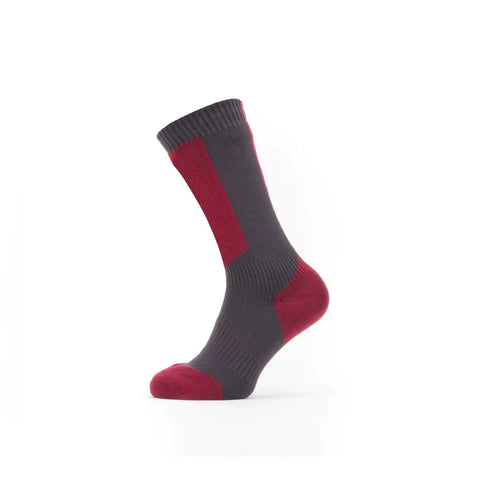Commuting by bicycle during the winter can be a rewarding experience, but it requires some preparation and extra caution due to the colder weather and potentially hazardous road conditions. Here's a guide to help you prepare for winter commuting on your bicycle:
Bike Maintenance: Ensure your bicycle is in good working order. Check the brakes, gears, tyres, and lights. Cold weather can exacerbate existing issues.

Tyre Selection: Consider using wider tyres with good traction. This provides better stability and grip on slippery roads.
Mudguards: Install fenders to keep slush and water from splashing onto you. This will help keep you drier and warmer.
Lights and Reflectors: Days are shorter in winter, and visibility may be reduced due to fog, rain, or snow. Make sure you have bright front and rear lights and reflectors.
Clothing: Dress in layers to stay warm. Use moisture-wicking base layers to keep sweat away from your skin, an insulating layer for warmth, and a waterproof and windproof outer layer to protect against the elements. Don't forget gloves and a winter cycling cap or balaclava to cover your head and ears.
Footwear: Insulated, waterproof boots will keep your feet warm and dry. You can also use shoe covers or gaiters to keep moisture out. An alternative is waterproof socks for an extra layer of waterproofing.

Goggles or Glasses: Protect your eyes from wind, rain, and snow by wearing cycling-specific glasses or goggles.
Winter-Specific Bike Accessories: Consider adding extras like handlebar mitts, which keep your hands warm while allowing you to maintain control over your bike.
Route Planning: Plan your route carefully. Opt for well-maintained roads and bike paths that are less likely to be icy. Consider alternative routes that may be safer in winter conditions.
Studded Tyres: If you live in an area with frequent ice or snow, consider investing in studded tires. These provide extra traction on slippery surfaces.
Braking Techniques: Be gentle with your brakes, especially on icy surfaces. Apply them gradually to avoid skidding. Practice braking in a controlled environment to get a feel for your bike's responsiveness in winter conditions.
Maintenance After Rides: Rinse off road salt and grime from your bike after each ride to prevent corrosion. Lubricate the chain regularly. Avoid jet washing, whilst tempting, jet washing your bike can remove vital grease and lubrication and lead to rapid deterioration of components.
Visibility: Use reflective clothing and accessories to enhance your visibility to motorists. Consider adding reflective tape to your bike frame and pedals.
Carry Essential Gear: Pack a small repair kit, a spare tube, a pump, and tools in case of a flat tyre or other minor issues. Quick repair solutions can be very important like CO2 inflators. Also, carry extra layers in case the weather changes.
Know When to Call It Off: Sometimes, conditions can be too hazardous. If the weather is extremely severe or you feel unsafe, it's okay to skip your ride or use alternative transportation.
Winter commuting by bicycle can be challenging but rewarding. By preparing your bike and yourself properly and staying cautious on the road, you can have a safe and enjoyable winter cycling experience.
Mountain & Road Bikes | Clothing | Bike Finance | All Terrain Cycles – allterraincycles can assist you with all your winter cycling needs.









